A Comprehensive Guide To Cooking Oils: The Good, The Bad and The Ugly
This post may contain affiliate links. See my disclosure policy.
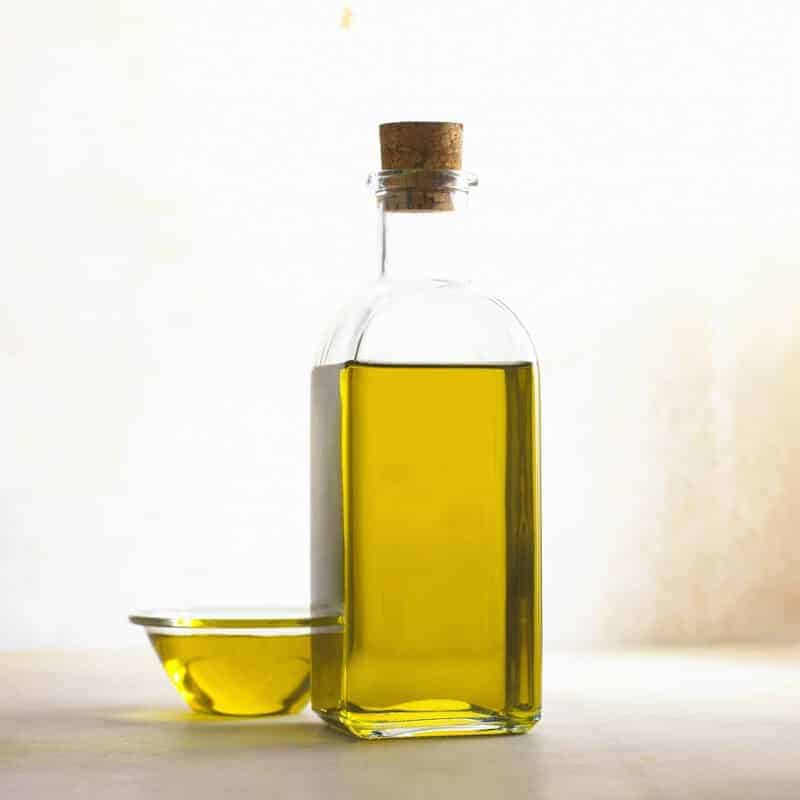
By Todd C. Killebrew, N.D.
With the enormous variety of cooking oils available on the grocery store shelves it can be very frustrating and confusing to decide which ones are the most healthy and how to properly use them. There are many differing opinions out there about which oils are good or bad, but many of the opinions are just that – opinion. And often they’re completely misinformed.
Of primary importance is which oils are stable when heated and thus don’t oxidize (ie, carcinogenic) or go rancid easily. Oxidation and/or rancidity can take an otherwise healthy oil and turn it into a free radical laced toxic swill that you do not want to ingest. Of equal importance is the oil’s fatty acid profile, which has a huge impact on its health benefits, or lack thereof.
This is not a comprehensive list of every edible oil on the planet, but I will cover oils that are commonly available for purchase, which ones to use, what to use them for and which ones to avoid altogether.
Before I get into the details of each oil let’s first discuss the basic biochemistry of the different groups of fatty acids they contain. This is important to understanding why certain oils should be used and others avoided.
Of particular importance is the degree of saturation of each fatty acid. I’ll explain. The more saturated a fat is the less prone it is to becoming oxidized from light and heat exposure, the less likely it is to go rancid, and therefore the more suitable it is for cooking involving heat. The less saturated they are the more prone they are to breakdown with light and heat. In these cases extra precaution needs to be taken – and certain types of oils are best avoided altogether.
Here are a few terms we’ll be referring to throughout the rest of the article as we discuss the different kinds of oil. It is useful to familiarize yourself with these terms as they determine whether an oil is good or bad and under what circumstances:
Saturated Fatty Acids (SFAs): Most of the fat found in meat, dairy and eggs falls into this category, however, some plant based oils contain large amounts of SFAs as well (e.g. coconut oil). They are referred to as saturated because their carbon chain structure is fully loaded (saturated) with hydrogen. They are usually solid at room temperature, stable at high heat and resistant to oxidation making them ideal for cooking. SFAs are often maligned as raising LDL (bad) cholesterol and promoting heart disease. This notion has been disproven yet continues to rear its head in medical thought, literature and practice.
Monounsaturated Fatty Acids (MUFAs): Unlike SFAs, MUFAs are missing one pair of hydrogen molecules from their carbon chain and so they are liquid at room temperature but usually solidify when placed in a refrigerator. MUFAs are generally found in nut and seed oils but can also be found in animal fat. They have been widely proven to be “heart healthy” by reducing LDL (bad) cholesterol and increasing HDL (good) cholesterol. Although they are not as stable under heat as saturated fats, they can withstand cooking at low heat without significant oxidation.
Polyunsaturated Fatty Acids (PUFAs): Found primarily in nut and seed oils, but also at high levels in fish oil, flax oil and to a lesser extent in animal fat. Their carbon chain structure is missing two or more hydrogen pairs, they are liquid in the refrigerator, and are unstable when heated making them very prone to oxidation when used for cooking. Because they oxidize so easily when heated they are especially prone to increasing heart disease risk through inflammation.
PUFAs include the essential omega-3 and omega-6 fatty acids (essential meaning they must be consumed in the diet as the body cannot produce them itself and are vital for biochemical function). Omega-3s are known to be powerfully anti-inflammatory and very beneficial, especially for heart and brain health. Omega-6s on the other hand (eg, “vegetable” oils) are also essential for health but tend to be over-consumed in the average American diet leading to excess inflammation, increased blood coagulation and a resultant increase in heat disease risk. Ideally one should consume a 1:1 – 3:1 ratio of omega-6s to omega-3s. It is suggested that the average American, however, consumes about a 10:1-30:1 ratio. This is a recipe for massive inflammation and the health issues that go along with it. This ratio is best kept low by simply limiting consumption of omega-6 containing oils and eating plenty of fish, flax and other omega-3 rich food sources.
Trans-fats: While these do occur in nature at low levels, they are mostly associated with the industrial process of hydrogenating PUFAs to convert them into saturated fats and make them more shelf stable. They have been shown to increase the risk of heart disease, decrease HDL (good cholesterol) and increase LDL (bad cholesterol). The evidence for their negative effect on cardiovascular health is such that the FDA classifies then as not generally recognized as safe.
Armed with this information, let’s examine some of the more commonly available oils on the market.
The Good: HEALTHY OILS
Olive Oil: Has been shown through decades of research to have numerous health benefits such as improving cholesterol levels (increases HDL and decreases LDL), preventing heart disease and inflammation. It is best used without heating (on salads or dipping for example) as it is primarily a monounsaturated fat and oxidizes when heated above 250 °F . Ideally it shouldn’t be heated above 200 °F. In other words, it can be used for very light sautéing. Stick with extra virgin olive oil, which is produced without chemical treatment. Keep it stored in a cool dark place as heat and light speed up the oil breakdown process.
Fatty acid profile – 15% SFAs, 75% MUFAs, 10% PUFAs (1% omega-3 and 9% omega-6)
Coconut Oil: This is perhaps the best oil for most cooking purposes as it is primarily a saturated fat and inherently stable when heated. Saturated fat is scary to many people and has been wrongfully linked with heart disease and obesity. Coconut oil is in fact incredibly healthy and has beneficial effects on blood lipid levels, has antimicrobial properties, etc. Use only organic virgin coconut oil which ensures that is has been minimally processed (no chemical, bleaching, deodorizing or refining). It is best for low to medium heat cooking, but should not be used for deep frying as it has a smoke point between 280-365 °F. Refined coconut oil can be used for high temperature cooking as its smoke point is 400-450 °F. However, it lacks many of the health benefits of raw coconut oil because the nutrients have been lost through the refining process. Because of coconut oil’s high percentage of SFAs it is solid at room temperature and has a relatively long shelf-life.
Fatty acid profile – 91% SFAs, 7% MUFAs, 2% omega-6
Palm Oil: Similar to coconut oil in that it is high in saturated fat and is very stable in medium heat cooking. However, there is a lot of controversy surrounding palm oil (palm oil plantations are often planted in environmentally precarious locations in Southeast Asia contributing to deforestation and putting certain species at greater risk for extinction). Coconut oil is just as good or better than palm oil in most respects, and is easier to find in stores.
Fatty acid profile – 51% SFAs, 39% MUFAs, 10% omega-6
Avocado Oil: It has a very similar fatty acid profile to olive oil and is also a healthy oil. Despite a low SFA content, it has a high smoke point of 475-520 °F, the highest of all plant derived oils, making it suitable for high heat cooking and frying. However, it is quite expensive and not easy to come by.
Fatty acid profile – 12% SFAs, 76% MUFAs, 12% omega-6
Butter: Like coconut oil that is also high in saturated fat, butter has long been demonized as a harbinger of clogged arteries. However, research is progressively showing that butter does not increase heart disease risk and actually has numerous health benefits for digestive health, weight control and, yes, even cardiovascular health. It is generally fine for medium to high heat cooking but because of its protein and lactose content it is prone to burning if cooked for too long at too high of heat. For this reason it should not be used for deep frying. It’s also because of its protein and sugar content that butter has so much flavor, especially when its caramelized.
Ghee (ie, clarified butter), does not have the lactose or protein of regular butter and is pure butter fat. Because of this it is even more suitable for high heat cooking and is a great choice for cooking at most temperatures.
Fatty acid profile – 68% SFAs, 28% MUFAs, 4% PUFAs (1% omega-3, 3% omega 6)
Lard, Tallow, Bacon Drippings: Their fatty acid content can vary quite a bit depending on the animal’s diet. For example, if the animal is grass or pasture fed it tends to have more SFAs and MUFAs and a high omega-3 content. If they are grain fed there tends to be more omega 6 PUFAs. With that in mind the fat from grass or pasture fed animals is the best choice between the two and is great for high heat cooking and frying. As with butter, current research simply does not substantiate what we’ve been told for the last several decades about animal fat contributing to heart disease, weight gain, and other health problems. (Future article to come. In the meantime, you can also refer to my article on The Truth About Full-Fat Dairy.)
Walnut Oil: Although it contains about 10% omega-3 fatty acids, it is also high in omega-6 fatty acids, and as such should be used sparingly. It has a great flavor, however, and lends itself well to occasional use in salads or added to a dish after cooking.
Fatty acid profile – 9% SFAs, 23% MUFAs, 63% PUFAs (10% omega-3, 53% omega-6)
Hazelnut Oil: Very similar in its composition to olive oil and is a great option for low heat cooking, used in salad dressings, or added to food after cooking. Very high in MUFAs and low in omega-6s.
Fatty acid profile – 11% SFAs, 78% MUFAs, 11% omega-6
Almond Oil: Similar in its composition to olive oil and hazelnut oil. A very healthy oil for low heat cooking or adding to food without heating.
Fatty acid profile – 9% SFAs, 73% MUFAs, 18% omega-6
Macadamia Oil: High in MUFAs and low in PUFAs and is accordingly not inflammatory. Similar to olive oil in that it can be used for low heat cooking. It has a rich flavor and is great for salads or sautéing. It would be a great choice for these purposes but it is quite expensive.
Fatty acid profile – 12% SFAs, 71% MUFAs, 10% omega-6
Sesame Oil: Highly flavorful and popular in Asian cuisine. However, it is high in PUFAs and should not be heated, so it is best added to dishes after cooking. While it is high in antioxidants, use only sparingly due to high omega-6 content.
Fatty acid profile -14% SFAs, 43% MUFAs, 43% omega-6
Lastly, though not for cooking, here are two great oils that commonly consumed for health reasons:
Fish Oil: An immensely healthy source of the omega-3s EPA and DHA, and is mostly PUFAs. As a result it is easily oxidized by heat and not suitable for cooking. Make sure you only eat wild caught fish and fish oil that are more likely to be free of toxins such as mercury and PCBs. Stay far away from farm raised salmon. It is much lower in omega-3s and is subject to a number of practices that diminishes its nutritional value and safety (e.g. they are fed chemicals to give them their distinctive orange color and are also given high levels of antibiotics).
Flax Oil: Like fish oil it is rich in omega-3s which are PUFAs and is not suitable for cooking. Unless you are vegan I recommend focusing on fish oil instead as the body cannot efficiently convert the ALA in flax oil to the active, highly beneficial EPA and DHA fatty acids found in fish oil. That said there no reason to avoid flax oil as it is part of a healthy diet. I do recommend only using it as freshly ground flax seeds because bottled flax oil and the oil in pre-ground flax tends to go rancid quickly.
The Bad and The Ugly: OILS TO AVOID
Canola oil: Unfortunately it is widely promoted as a healthy oil, but is wrought with controversy. On paper it looks pretty good with mostly MUFAs and a relatively high omega-3 percentage but it does not hold up well to closer scrutiny. A derivative of rapeseed oil, its name “Canola oil” is a shortened version of “Canada oil low acid.” Had they kept its actual name, rapeseed oil, probably no one would buy it, which really is just as well.
Here’s a little history on rapeseed oil: During the second world war, rapeseed oil was used on naval ships as a lubricant. When the war ended, there was so much farmland in Canada already dedicated to growing rapeseed that they wanted to find other uses for it. It took them until the 1970’s to figure out a way to make it fit for human consumption. Rapeseed oil is such a terribly foul tasting and smelling oil that it must be heavily refined, bleached and deodorized using harsh chemicals for it to be palatable. And that’s exactly what they’ve done to it. The end result is what is now called Canola oil. Canola oil is also prone to rancidity from the refining process and is often rancid before it even reaches store shelves.
Canola oil is largely used in cooking, frying, and in process foods, but since it contains a considerable amount of PUFAs in addition to often being rancid, this only heightens its inflammatory effects. Avoid it completely.
Fatty acid profile – 7% SFAs, 61% MUFAs, 32% PUFAs (11% omega-3, 21% omega-6)
Vegetable oil/Soybean Oil: These two terms are one and the same. While there is a category referred to as “vegetable oils”, there are no oils that are actually derived from vegetables, nor are they healthy like vegetables. Soybean oil is 54% omega-6 fatty acids. Again, this means pro-inflammatory and should be avoided completely. Unfortunately, because it is cheap to produce is one of the most common oils in processed foods. Browse through the ingredient labels on most everything the next time you’re at the grocery store and you’ll find soybean oil in a dizzying array of products. My wife and I spent a full 15 minutes looking through every bottle and brand of salad dressing and mayonnaise and couldn’t find a single one without it. Read labels carefully and avoid consuming any soybean oil-containing products.
Fatty acid profile – 15% SFAs, 23% MUFAs, 54% omega-6
Corn Oil: Corn oil is 58% omega-6 fatty acids, which means – you guessed it – pro-inflammatory and unsuitable for cooking. Again, because it is cheap to produce it is used in many processed foods.
Fatty acid profile – 13% SFAs, 29% MUFAs, 58% PUFAs (1% omega-3, 57% omega-6)
Sunflower Oil: Very high in PUFAs. An extremely poor choice all around.
Fatty acid profile – 12% SFAs, 16% MUFAs, 72% PUFAs (1% omega-3, 71% omega-6)
Grapeseed Oil: A byproduct of the wine-making industry. It is often promoted as healthy but it contains a whopping 70% omega-6 fatty acids which means it is very pro-inflammatory, not heart healthy and may worsen auto-immune disorders and other inflammation-based diseases. Avoid it.
Fatty acid profile – Fatty acid profile – 10% SFAs, 16% MUFAs, 70% omega-6
Peanut Oil: Often touted as healthy for frying and high in MUFAs, but it is too high in omega-6’s to be used for high heat cooking. It is best avoided. If you must deep fry something, peanut oil is still a better choice than Canola in my opinion, but they’re both bad. Really, deep-frying should just be avoided altogether. But it sure is easy to forget that when you’re served a plate of crispy deep-fried chicken or fish & chips. In the old days lard or tallow was used for deep-frying, which really is the better choice compared to the other options.
Fatty acid profile – 19% SFAs, 48% MUFAs, 33% omega-6
Safflower Oil: There two kinds of safflower oil from two different varieties of the safflower plant. One that is high in MUFAs and one that is high in PUFAs. Unfortunately the high PUFA version is the most widely available. It has even higher PUFAs than sunflower and grapeseed oils. Leave it on the shelf.
Fatty acid profile (High PUFA version) – 6% SFAs, 14% MUFAs, 75% omega-6
Cottonseed Oil: Same issues as with all of the other seed oils. High in omega-6s and, like Canola oil, is not even from an edible plant! I guess something has to be done with all of those leftover cotton seeds. Avoid it.
Fatty acid profile – 26% SFAs, 17% MUFAs, 52% omega-6
Trans-fats: Commonly sold in the form of margarine and vegetable shortening. As previously mentioned they are not considered safe by the FDA and are even banned in some places. Fortunately the FDA now requires that trans-fat content is listed on nutrition labels. Unfortunately, they still allow a certain level to exist in foods without requiring it to be reported. Added to that companies have become very adept and sneaking it in. Even if the label says zero trans-fats, look at the ingredients list for any mention of the words hydrogenated or partially-hydrogenated. If you see either of those run the other way!
Other things to keep in mind:
Buy all oils in small batches so you can use them before they go rancid. Really all oils should be stored in dark containers to avoid damage from light. Unfortunately that is not how most oils are sold.
Specifically, unsaturated fats like olive, avocado, palm, macadamia, walnut, fish and flax oil should be kept in a cool, dry, dark place as they are oxidized by light and heat. For example, don’t keep them near your stove/oven but rather in a place with a more consistent temperature. Also keep the lids on them tightly whenever they are not in use.
REQUESTS for future articles? Which health topics interest you?
Flaxseeds picture courtesy Sanjay Archavya via CC licensing


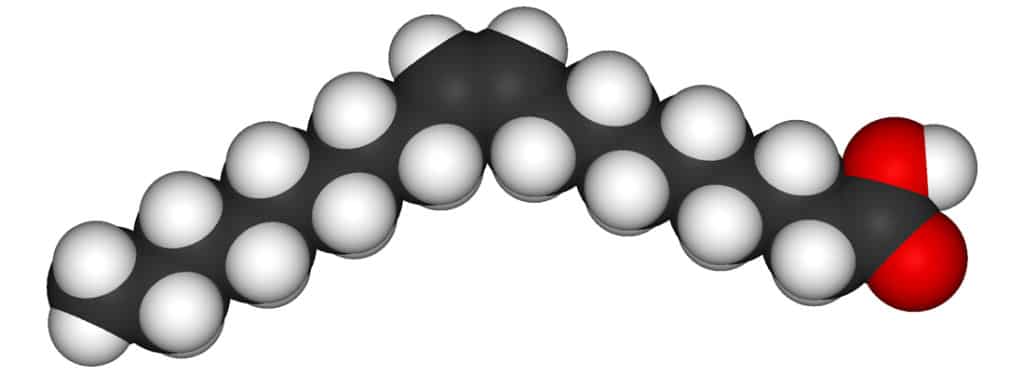


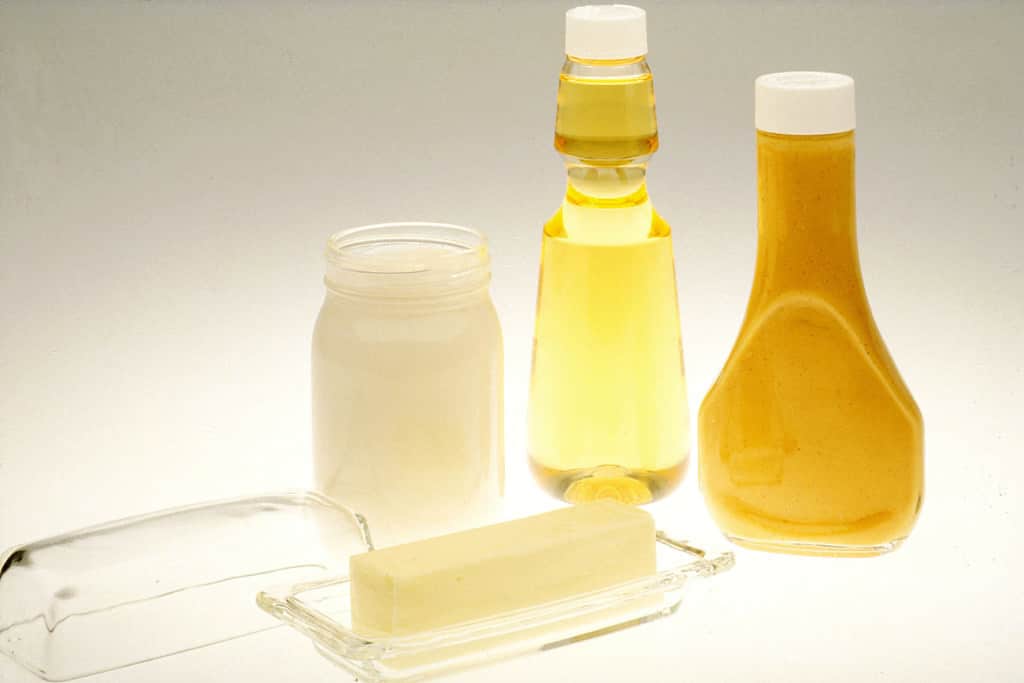
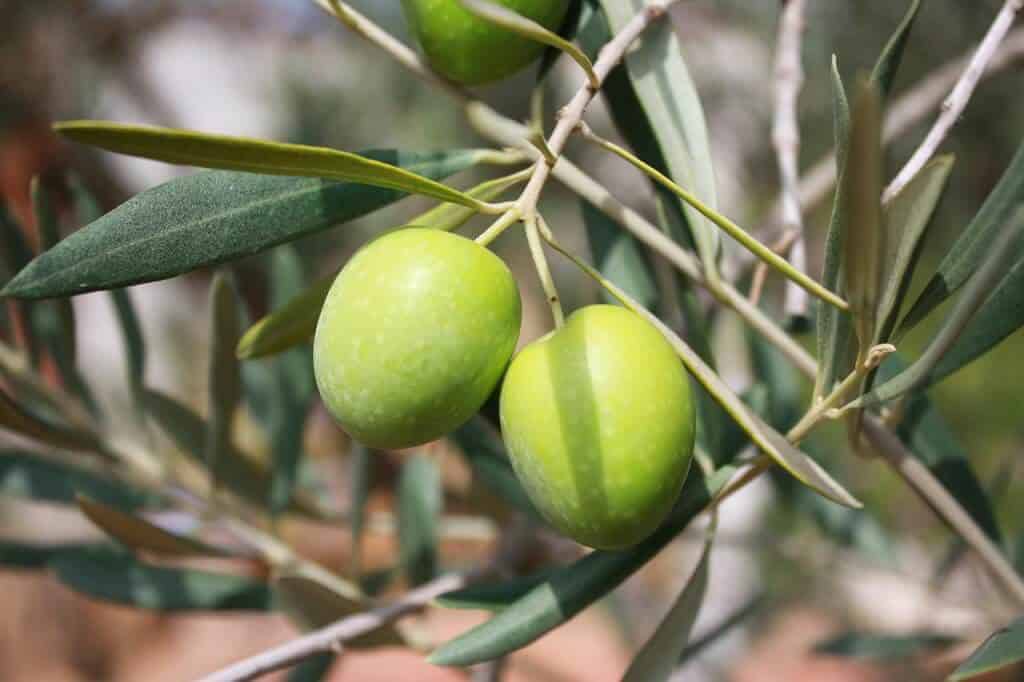
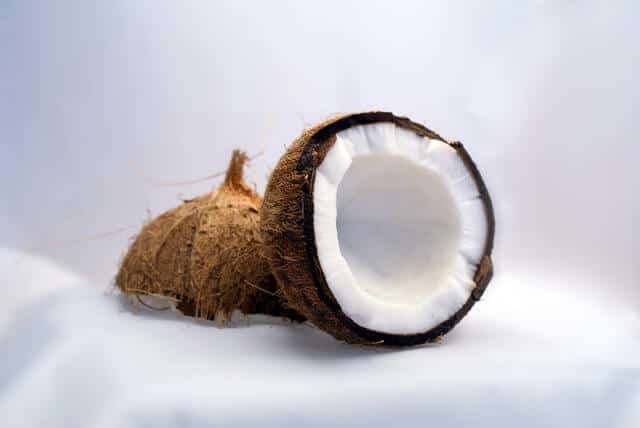

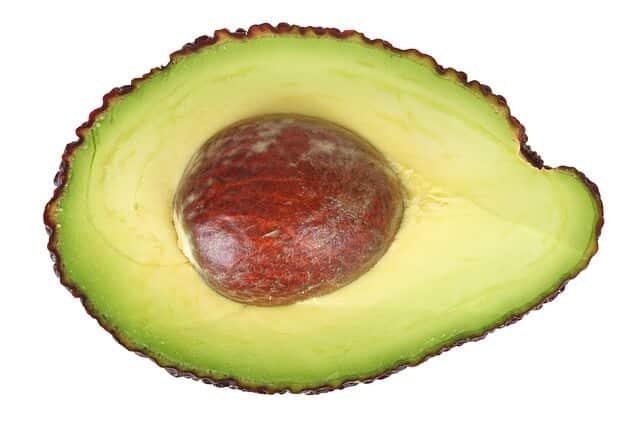
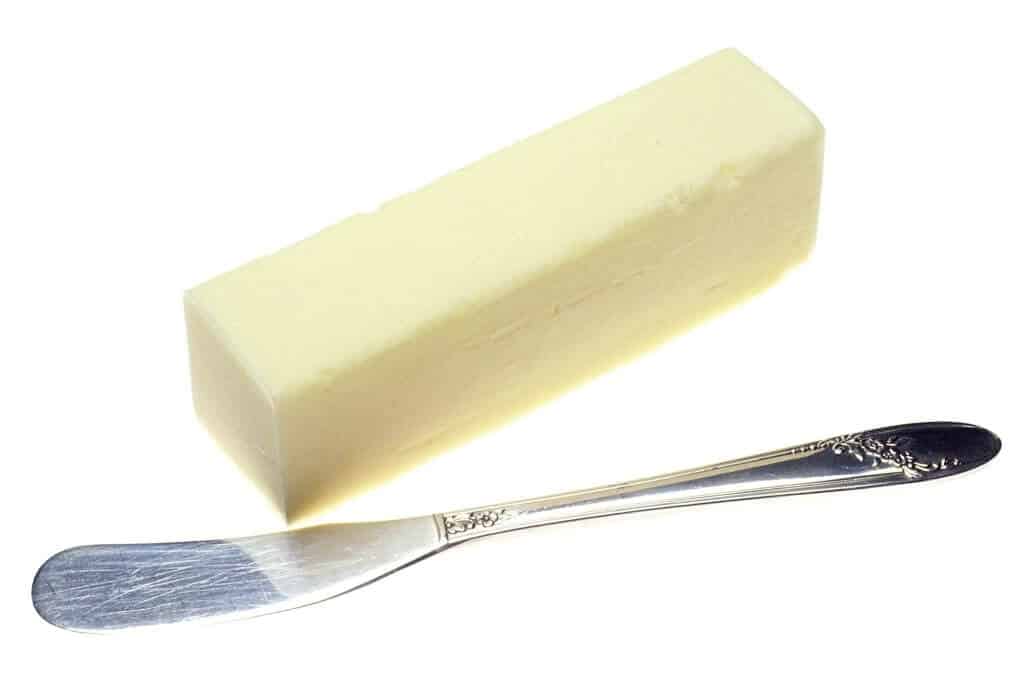
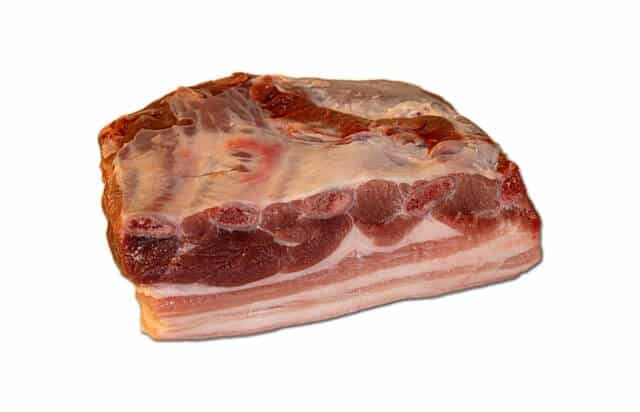
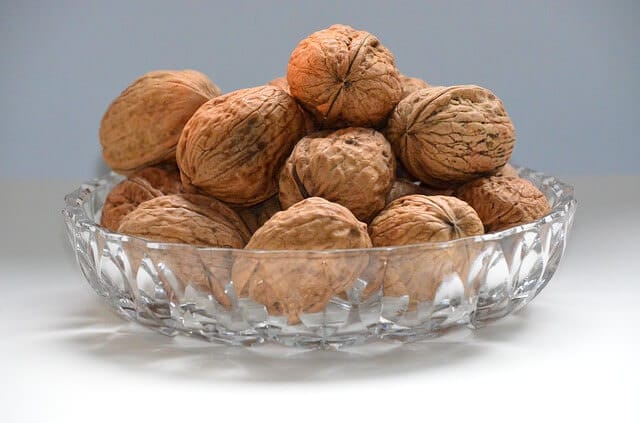
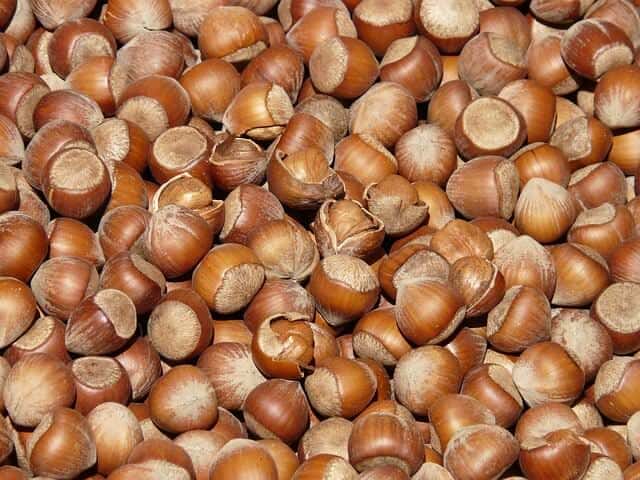
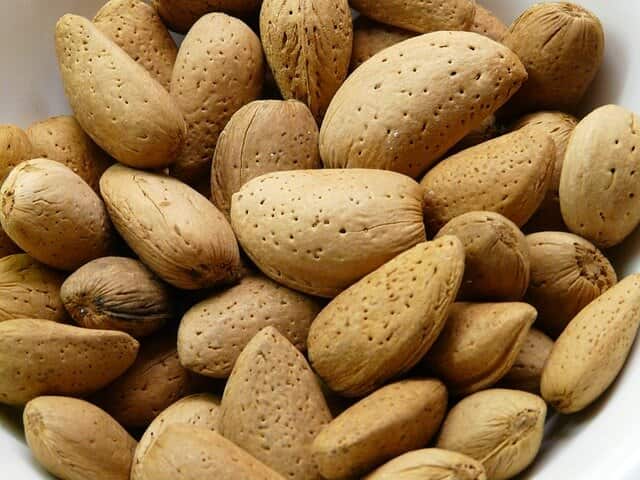
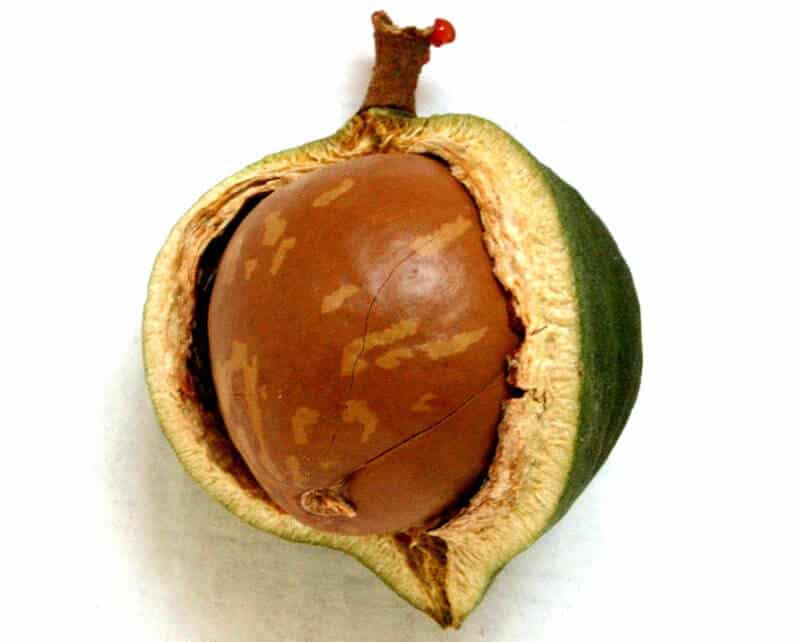
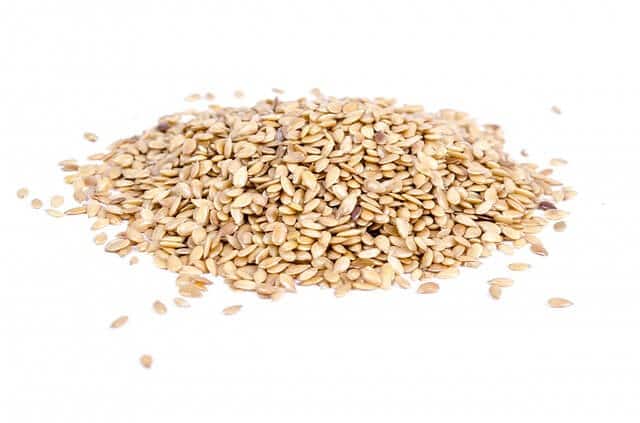
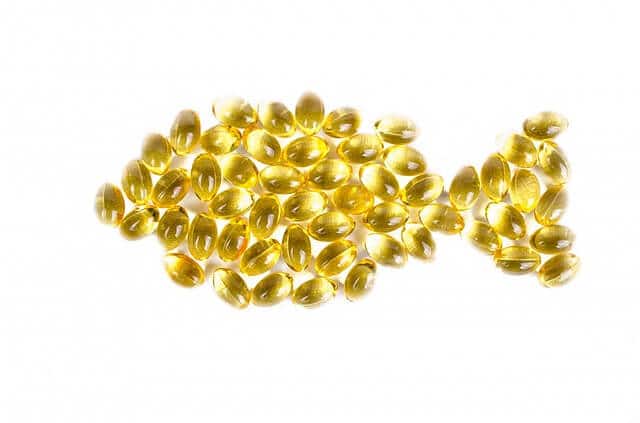
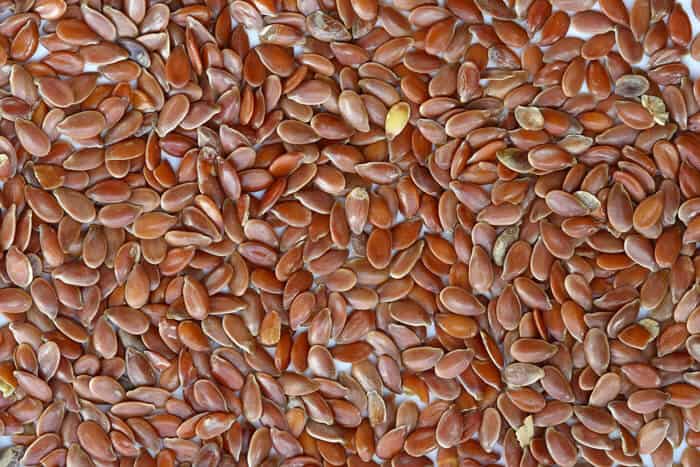
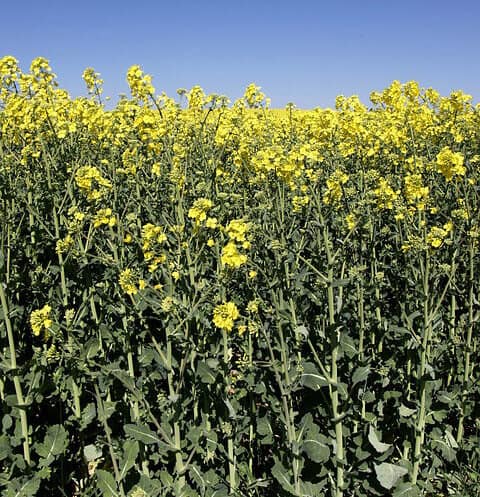
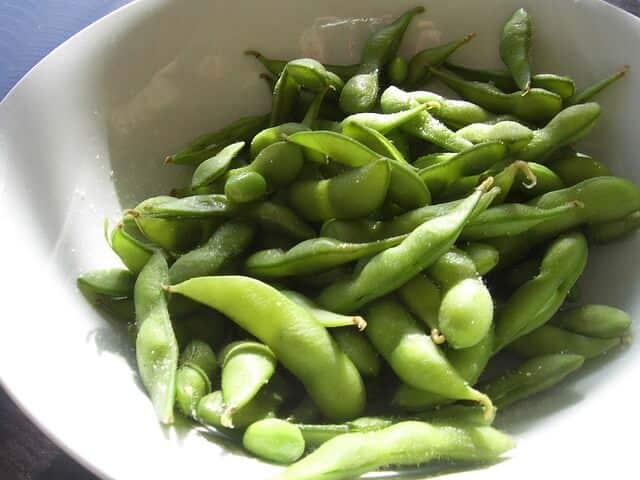
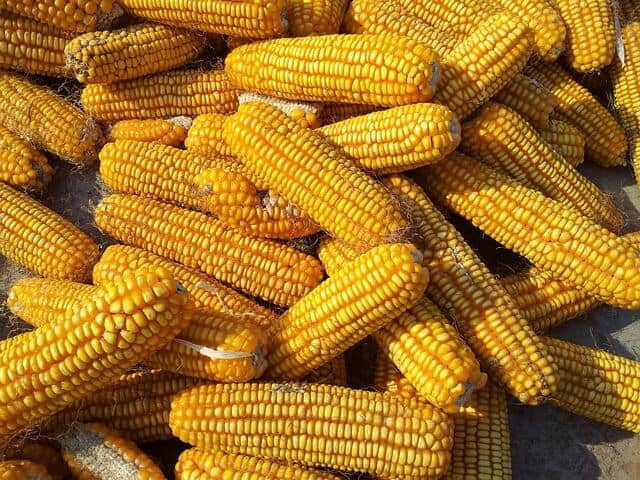

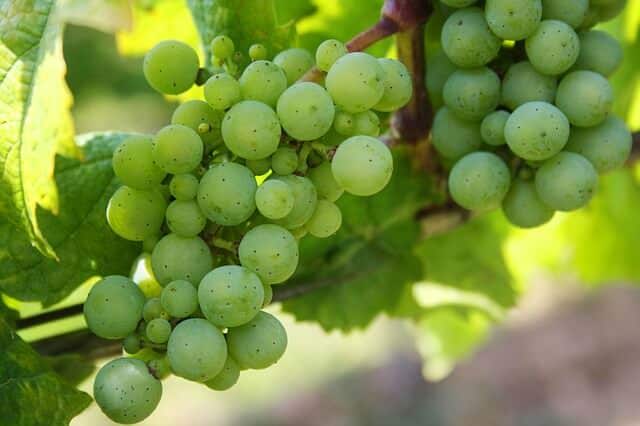
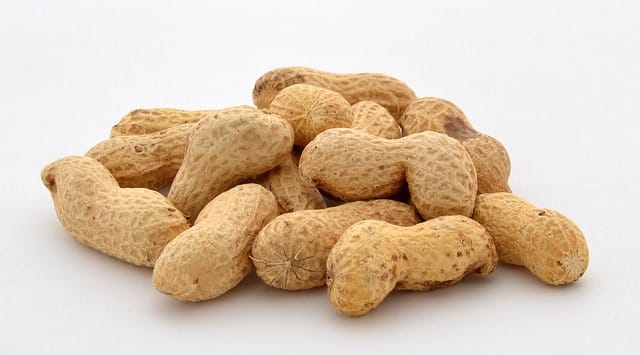


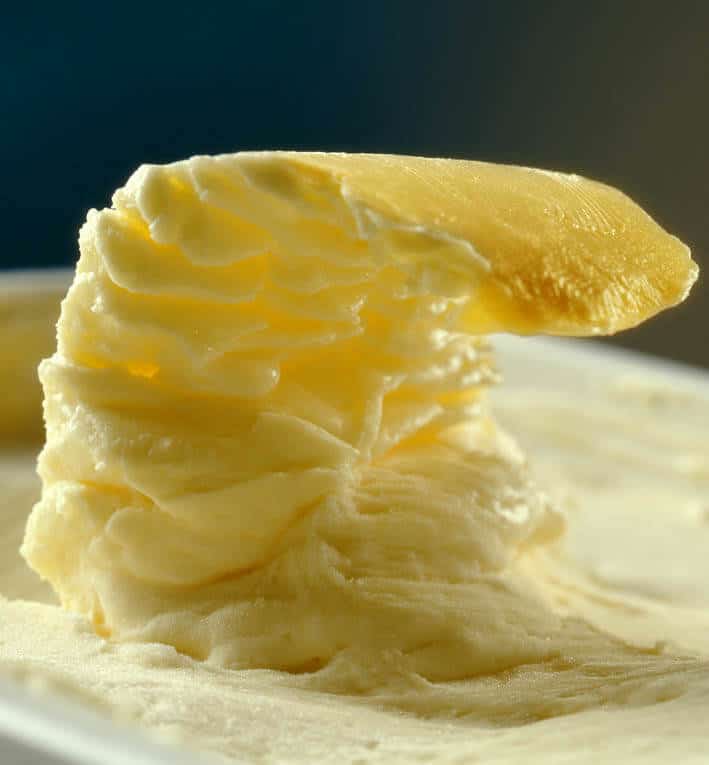



















I love the recipes and information supplied on this site and will be looking at what oils/ fats I am using in cooking from now on as I was mainly using olive or canola oil for cooking.
I was born in the 50s when the flavour of food was so much better with the lard baked dinners or even a sliced tomato sandwich which had plenty of flavour in itself.
Keep up the good work.
Thank you so much, Dave!
Very good information in one place. Thank you. High oleic sunflower oil now needs to be included.{Purported to be approximately 82% MUFA,s. I have acquired seeds of high oleic sunflower seeds, as apparently a patent has expired [or some such money directed corporate protection] and can home grow a protein source with healthful oil. The cold pressed oil and seeds I acquired from Wright Farms, Bird City Kansas.
Very good article with tons of information. I will be checking the labels from now on. Thanks!
When anyone recommends coconut oil ( heart attack and stroke inducing ) and almond oil ( where almond growers have killed off the bee population in frightening quantities due to heavy pesticide spraying ) I take what I’ve just read about what fats are good and what fats are not good as being nothing more than trivia that will change in no time just as the “coffee is good for you, no, coffee is bad for you, red wine is good for you, no, red wine is bad for you endless so called “health” reports consumers are subject too. My mother and grandmothers, aunts, long, long passed used good old regular lard from the grocery store or market with nary a health problem be it themselves, their spouses and family members. They all lived to a ripe old age. Methinks the panic that’s being drilled into the minds of our young people of today by the so called health experts is unwarranted and needs to pulled back sharply before we end up with a younger generation and their future children living in constant food paranoia.
Coconut oil is heart attack inducing? I’ve heard some “health experts” say it shouldn’t be cooked on high heat with, but have never heard about it causing heart attacks or stroke.
It is not heart attack or stroke inducing
What about Rice Bran oil, is it good or bad?
Which oil would you recommend using for makin mayo? I’ve previously used grapeseed, but, according to your article, it doesn’t sound like a healthy oil to use.
Recently Rice Bran oil has flooded supermarket shelves. Is this another oil similar to canola oil or does it have some good points?
Hi Allan, that is a very good question as this oil is a relative newcomer. I’m inclined to avoid using it as it’s still a highly refined oil and has not traditionally been used for cooking like the other healthier oils that were discussed. I tend to stick with oils that do not need complex refining processes and have been used by people for generations (e.g. olive oil, coconut oil, tallow, butter, etc.) That said it seems to be better than soybean or canola oil just in case you are forced to choose between one or the other!
A year or so, before I found your postings, in a conversation with my uncle, who was a professional short order cook in the 1950s, he reminded me of how wonderful french fries were fries in beef tallow. Not really believing the all fat is bad mantra of today,s establishment postings, I decided to give it a try. Salvaging the rendered fat from several beef arm roasts, I cooked up a batch of french fried potatoes, and promptly entered a nirvana-like rapture that lasted until every last frie was only a memory. Being a child of depression era people, i went to salvage the tallow to freeze and reuse, when i discovered that there was virtually no tallow consumed. Further experimentation revealed the the tallow consumption was only 1/4 that of frying the same number of fries in corn oil. Perhaps deep frying in beef tallow is not as bad as advertised, especially if one considers the quantity consumed versus the other plant based oils.
That’s an interesting observation about frying in beef tallow. I do believe that animal fat is far better than using processed oils and if the food being fried absorbs less oil then all the better! That being said I would still treat it as “less bad” than say canola or peanut oil rather than as a “healthy” oil. In other words still consume it in moderation, which I’m sure you are. And yes I agree that there is no comparison in flavor!
In the UK we have local cold- pressed rapeseed oils. You don’t mention this oil except in relation to Canola – but in natural form is it good to cook with?
Hi Charlotte,
I’m not 100% sure about cold-pressed rapeseed oil as there isn’t a lot of good research on it, but I do know that it doesn’t have many of the drawbacks of the “Canola oil” that is widely available in the U.S. and Canada. First, the UK version is not GMO and second it doesn’t not require the use of harsh chemicals for processing since it is naturally low in erucic acid. So, in those two regards alone it is most definitely better than Canola oil. At the very least I wouldn’t use it for high heat cooking, but possibly for low-heat or no-heat culinary use.
I hope this helps.
Wow this post is really helpful!
This is so helpful! I use canola oil and grapeseed oil sometimes because of the high smoke point. I didn’t realize it was so unhealthy. Hmm. I’ll have to think through what high smoke point oil to use without adding flavor to the dish.
Steph, the best high smoke point oils are lard of course, coconut and avocado. For a neutral-tasting oil avocado is the best and it’s what I use more than any other oil. You can find the best deal at Costco.